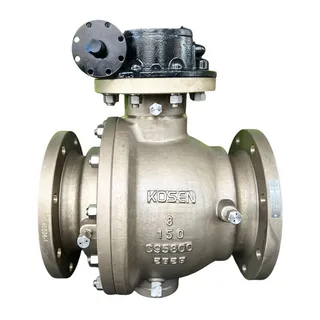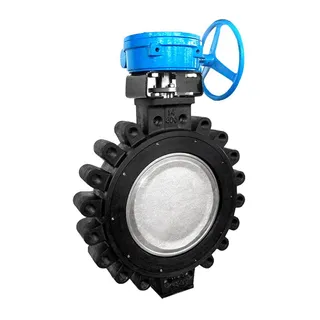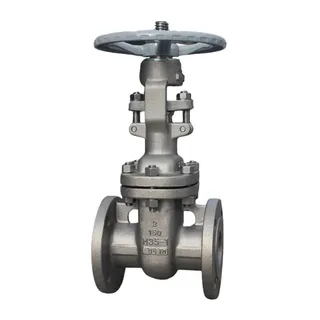In industrial pipeline systems, ball valves, as a key control component, are of undeniable importance. Ball valves come in many types, among which API 608 ball valves and API 6D ball valves are the most common and widely used. They have significant differences in structural design, functional features, application scenarios, and maintenance. This article will deeply analyze the characteristics of these two types of ball valves, helping you better understand their advantages and applicability under different working conditions.
A ball valve is a valve that uses a spherical ball to rotate 180° around the axis of the stem to achieve opening and closing. According to the structure of the ball, ball valves are mainly divided into floating ball valves and trunnion-mounted ball valves.
The ball of a floating ball valve is not supported by a shaft but is supported by the valve seats at the inlet and outlet ends. The connection between the stem and the ball is movable. When the valve is closed, the ball is pushed toward the outlet seat by the medium pressure, thereby achieving tight sealing. This type of ball valve has the characteristics of simple structure, easy manufacturing, low cost, and reliable operation, and is therefore widely used in process pipelines.
The ball of a trunnion-mounted ball valve is supported by a support plate fixed to the valve body, and the valve seat is designed with a piston effect. Under the action of medium pressure, the valve seat moves toward the ball, pressing the sealing ring against the ball, thereby generating sealing contact pressure to achieve sealing of the medium. Since the force generated by the upstream medium on the ball is entirely transmitted to the bearings and does not push the ball toward the downstream seat, the valve seat does not bear excessive pressure. This type of ball valve features low operating torque and stable sealing performance, making it particularly suitable for high-pressure, large-diameter long-distance pipelines.
API 608 ball valves are mainly used in petrochemical process pipelines, and their main function is to connect or cut off the medium. Since process pipelines often involve high temperature and high pressure, toxic and harmful, flammable and explosive, corrosive, and continuous operation conditions, the valve's sealing, materials, and corrosion resistance must meet very high requirements.
API 608 ball valves generally adopt a floating ball structure, which is simple and low-cost, and can meet the basic requirements of process pipelines. The sealing performance of floating ball valves mainly depends on the medium pressure. When medium pressure acts on the ball, the ball is pushed toward the outlet seat, achieving sealing. This design gives API 608 ball valves high reliability and stability during operation.
API 608 ball valves are widely used in petrochemical process pipelines to control the flow of various media. Due to their simple structure and convenient operation, they are suitable for frequent opening and closing conditions. In practical applications, API 608 ball valves can effectively prevent medium leakage, ensuring the safety and stability of the production process.
Inspection, examination, and pressure testing of API 608 ball valves are carried out according to API 598 "Valve Inspection and Testing". As a supplementary specification to ASME B16.34 "Valves – Flanged, Threaded, and Welding End", API 608 ball valves must fully meet the inspection and testing requirements of ASME B16.34. These standards provide a basic guarantee for the quality of API 608 ball valves, ensuring their reliability and safety in process pipelines.
API 6D ball valves are mainly used in long-distance pipelines. These valves not only need to have the function of connecting or cutting off the medium but also need to provide functions such as draining, venting, overpressure relief, grease injection, and online leak detection. Due to the particularity of long-distance pipelines, API 6D ball valves have higher requirements in design and manufacturing.
API 6D ball valves adopt a trunnion-mounted ball structure, which can effectively reduce operating torque and improve the stability of sealing performance. The valve seat of a trunnion-mounted ball valve uses a piston effect design and is divided into single piston effect and double piston effect. A single piston effect seat can seal only in one direction, while a double piston effect seat can seal both forward and reverse flow. Through different combinations, API 6D ball valves can achieve DBB (Double Block and Bleed), DIB-1 (Single Direction Seal), and DIB-2 (Double Direction Seal) functions.
API 6D ball valves have multiple functions to meet the special requirements of long-distance pipelines.
During factory testing, the drain and vent functions are used to verify the sealing performance of the valve seat. Before pipeline commissioning, the drain function is used to remove debris in the valve cavity. During operation, drain and vent functions are used for online seat sealing inspection. During emergency repair, drain and vent functions can replace pipeline drain and vent devices. To ensure repair safety, reduce environmental impact, and lower venting costs, the drain and vent functions of API 6D ball valves must be strictly designed according to API 6D standards, meeting the size requirements for drain and vent outlets specified in the standard.
API 6D ball valves also have an overpressure relief function in the cavity, which can release excess pressure to the outside of the valve seat through the DIB-2 seat, or through an additional safety relief device mounted on the valve body. This design effectively prevents valve damage caused by overpressure, improving the safety of the ball valve.
To improve sealing performance, API 6D ball valves use a piston-effect seat design. Piston-effect seats can effectively prevent medium leakage and maintain excellent sealing even under high pressure. In addition, API 6D ball valves also use rubber piston-effect seat sealing rings, which adapt well to hard particles in the pipeline and prevent permanent damage to the sealing ring, ensuring long-term stable sealing performance.
API 6D ball valves are mainly used in long-distance pipelines, which typically have large diameters, high medium pressures, and flammable or explosive characteristics. Long-distance pipelines usually traverse complex terrain, harsh climates, and areas with wide temperature variations. Given the high investment, long-term continuous operation is required. Therefore, API 6D ball valves must have high safety, reliability, sealing, and strength to ensure the long-term safe operation of pipelines.
The inspection and testing requirements for API 6D are stricter than those for API 608. For example, the pressure duration is longer, more test items are required, and operation procedures are more complex. During sealing tests, API 6D valves are pressurized from one side and the cavity is tested for sealing performance, which can more accurately detect the sealing ability of the valve seat.
In the latest 2014 version, API 6D introduced Quality Specification Levels (QSL) requirements. QSL levels include detailed requirements for Non-Destructive Examination (NDE), pressure testing, and manufacturing documentation. Depending on the QSL level, the required inspection and testing items and scope of API 6D ball valves vary. The strictness increases with the QSL level. QSL-1 is the minimum quality specification, and higher levels (QSL-2 to QSL-4) can be specified by the purchaser if necessary. The introduction of QSL in the new API 6D version further raises the quality requirements for pipeline ball valves and standardizes them.
Next, we will conduct a comprehensive and detailed comparison of API 608 and API 6D ball valves. Through comparison, we reveal their essential differences from multiple dimensions, helping readers better understand their unique value and applicable scope in practical applications.
API 608 ball valves are mainly used in process pipelines, with frequent operations and relatively short life, but replacement is easier due to smaller size. API 6D ball valves are used in long-distance oil and gas pipelines, which have large diameters, high-pressure flammable media, traverse complex terrains and harsh climates, and require long-term continuous operation. Therefore, API 6D valves have higher requirements for safety, reliability, sealing, and strength than API 608 valves.
API 608 valves are generally installed within the plant, where the site is level, storage and transport are convenient, installation is concentrated, and the construction environment is good. API 6D valves are installed on long-distance pipelines, mostly outdoors, with some in valve chambers. Long-distance pipeline projects have large spans and distributed sites, with buried pipelines and extremely harsh construction environments. Therefore, the installation of API 6D valves must strictly follow construction procedures to ensure performance and quality.
API 608 valves, due to a better operating environment, are relatively simple to maintain. API 6D valves, being mostly in an open state and exposed to harsh environments, require enhanced routine maintenance. For valve seat maintenance, proper lubrication must be applied, debris must be prevented from entering, adhesion between the ball and seat must be avoided, and dry friction during ball movement must be prevented to protect both the seat and the ball and ensure normal operation of pipeline ball valves.
Although API 608 and API 6D ball valves both belong to the ball valve category, they differ significantly in structural design, functional features, application scenarios, and maintenance. API 608 valves are suitable for process pipelines, with simple structure, low cost, and suitability for frequent operation. API 6D valves are mainly used in long-distance pipelines, with multiple functions to meet the special requirements of long-distance pipelines, demanding higher safety, sealing, and strength.
In practical applications, selecting the appropriate ball valve requires comprehensive consideration of the specific working conditions and needs. Regardless of type, installation and maintenance are key to ensuring performance and lifespan. Only by strictly following installation procedures and performing regular maintenance can the valve maintain good performance during long-term operation, providing reliable protection for industrial production.



